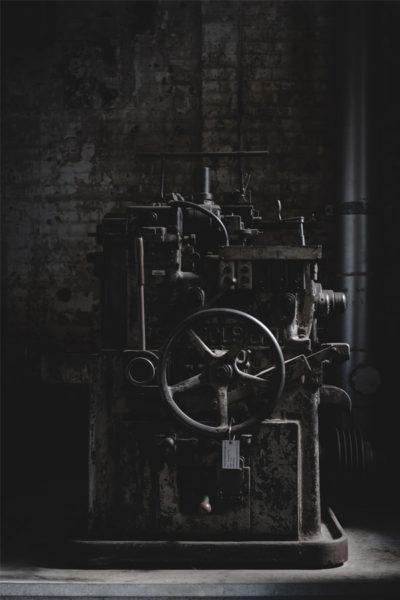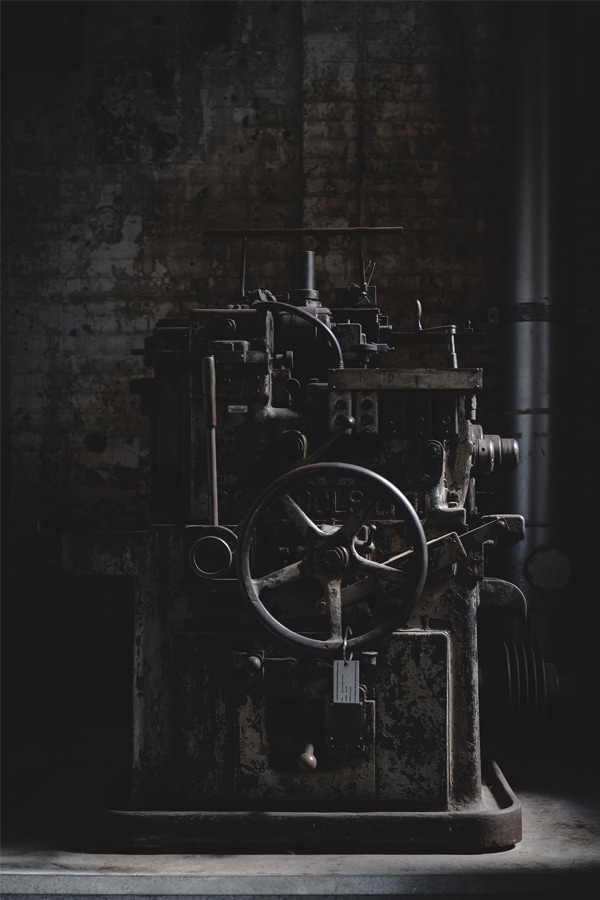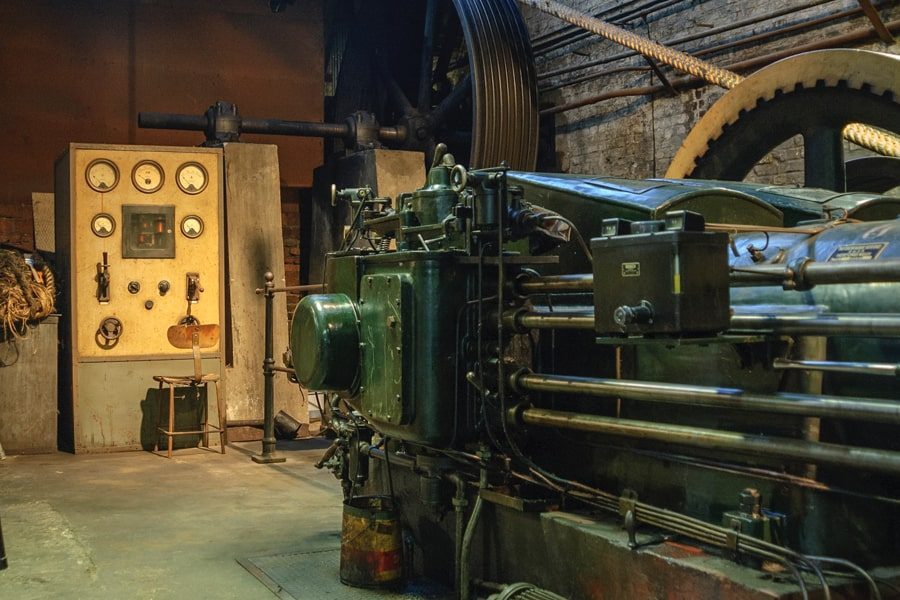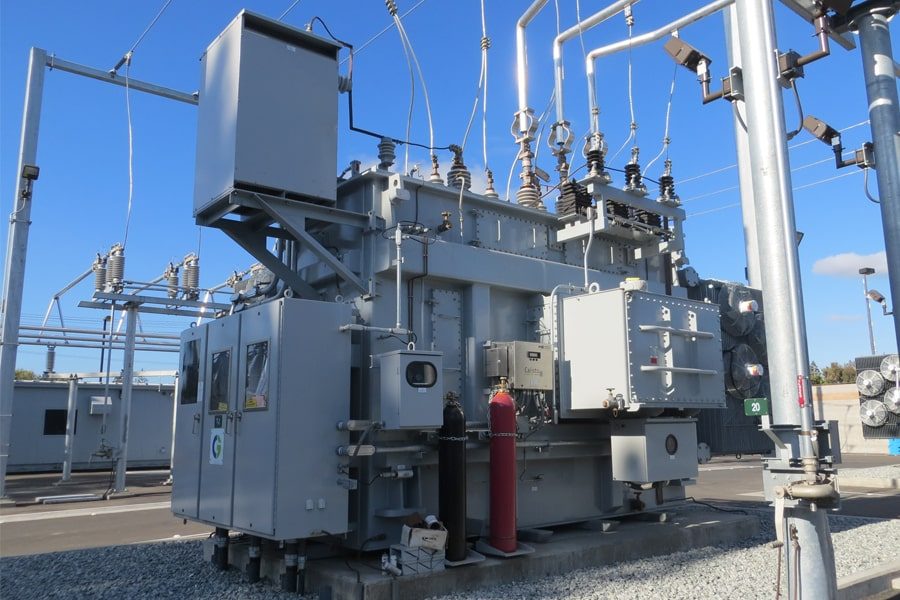
Every day, people’s living situations improve. As a result, people are expecting more comforts, conveniences, and luxuries in the future. Maybe they could have tolerated a power outage a few years ago. A power outage, on the other hand, would not be tolerated presently. The need for generators is on the rise. As a result, there is a greater need for generators. This is comprehensible given people’s desire for a life of luxury and convenience. This article focuses on the history of generators. Generators were not the same as now when they came into play. You can get to know about all that through this article.
Why do we need Generators?
Power outages can continue for hours, days, or even weeks, and if you are not prepared, they can be costly. Hurricanes, tornadoes, and ice storms can all cause power outages. However, harsh weather is not the only factor that might cause the lights to go out. A blackout can also be caused by curious animals, traffic accidents, human mistakes, and utility outages. But you can prepare for such circumstances by purchasing a standby generator or portable generator to help you cope with power disruptions.
At home, you may need a generator as you need to keep all the appliances and lights running without fail. Of course, there can be medical appliances that you would have to use that need a constant power supply. More than that, if there is a power cut, that can upset your entire day. You would miss your regular flow of work for the day. And your state of mind would not be the same as it has to be. So, to preserve the comfort of your place, you surely would need to use a generator.
A generator would be essential if you are running a business. There can be tools and equipment that need a constant power supply. In such cases, using generators is an essential thing. And you cannot stop engaging in your profession because of a power failure. You would need a generator to go on with the work that you have to carry on. Especially, professionals like electricians and HVAC technicians would need generators a lot as they have to go on remote duties most of the time.
Even for recreational activities like camping, boating, and tailgating, you would need to use a generator mainly. Then, you can enjoy it to the maximum. But you need to be safe when using generators.
History of Generators
Now, you know why we need generators. So, it is time to focus on the history of generators.
Timeline
Let us take a look at how the timeline of the generators looks like. This is important to understand the history of generators better.
The Mid-1700s
We shall first talk about the history of generators referring to the mid-1700s. Generators have been around since the mid-1700s. When James Watt, a Scottish instrument maker, grew concerned about steam engine technology. He discovered that the Newcomen 1712 steam engine’s engine design lost a lot of energy because of the cylinders’ constant chilling and reheating during operation. The Watt steam engine was invented in 1781 by James Watt, a mechanical engineer, and chemist.
In addition, James Watt modified the present design of generators in order to reduce energy waste while also increasing the generator’s power and efficacy. He also upgraded his engine unit to produce rotating movements. He also contributed to the invention of the unit Watt as well as the notion of Horsepower (HP). As a tribute to his exceptional character, this unit was named after him. While attempting to sell his discoveries, he ran into significant financial troubles. James Watt went on to become a very successful businessman and a very rich man. His improvements to the steam engine transformed it become the Industrial Revolution’s mechanical workhorse.
Green-Power America GPG10000EW 10000W Pro Series Recoil Electric Start Generator
The Green-Power America GPG10000EW Pro Series Recoil Electric Start Generator – 10,000-Watt is ideal for use at home, in an emergency, or for recreational purposes. It has a starting power of 10,000 watts and a running power of 7,500 watts. It comes with a 6.6-gallon fuel tank. The Environmental Protection Agency has given its approval to this. Green-Power America’s products are to the highest quality standards. Quality, Durability, Innovation, and Longevity are among the qualities of its products. They use only the best materials. Green-Power America, LLC is a firm established in the United States that specializes in providing service and support to the North American market.
The Early-1800s
When it comes to the history of generators referring to the early-1800s, Michael Faraday, an English physicist, created the fundamentals of electromagnetic field physics in the early 1800s. It influenced the development of electric motor technology. In 1831, Michael Faraday invented the Faraday disk, which was the world’s first electromagnetic generator. One of the most prominent scientists in the history of generator creation was Michael Faraday. Electricity became available for use in several technological areas of the modern world as a result of his tireless efforts.
Scientists are attempting to further refine this notion using Michael Faraday’s results. A year later, Hippolyte Pixii, a French instrument manufacturer, exploited Faraday’s concepts to create the first magnetoelectric generator.
Pulsar G12KBN Heavy Duty Portable Dual Fuel Generator – 9500 Rated Watts & 12000 Peak Watts – Gas & LPG – Electric Start – Transfer Switch & RV Ready – CARB Compliant
In the case of a power outage, the G12KBN produces an amazing 12,000W (GAS)/10,800W (LPG) and is capable of powering big appliances. This generator is portable and simple to store thanks to its robust frame, handy drop-down handles, and 10″ never-flat wheels. With four 120V 20A AC outlets, one 120V/240V 30A Twist-Lock outlet, one 120V/240V 50A Outlet, and one 12V DC Output, you can power a variety of devices at the same time.
The Mid-1800s
Small engines in Western Europe developed to run on gasoline and kerosene by the mid-1800s. They were significantly more compact and efficient. Zenobia Gramme was instrumental in making these little engines commercially available. Zenobia Gramme is the person who improved the Dynamo generator’s power to the point that it could be used for commercial purposes.
Alternative Current and Direct Current generators were both in operation by the 1870s. The Jablochkoff Candle is an outdoor arc lighting system that employs AC generators to produce electrical power. Nonetheless, it was not until the late 1870s that Thomas Edison, a physicist, succeeded in developing a new electric lighting system based on DC generators. He intended to use electricity to power both the lighting and the electric motors. Due to the lack of good AC motors during those times, DC power was the only viable alternative for the needed consumption. Do you know that Thomas Alva Edison used this innovative concept to put up DC generators at the Pearl Street station in New York City in 1882, making it the world’s first commercial power-producing installation? Unfortunately, a suitable AC motor was still unavailable.
This is about the history of generators referring to the mid-1800s.
Pulsar 7, 750W Dual Fuel Portable Generator with Switch & Go Technology, PG7750B
The Pulsar PG7750B dual fuel generator is a solid alternative for addressing your power demands when mobility and performance are important. With the flip of a button, this dual fuel generator may run on gasoline or liquid propane. While the generator is running, its innovative Transition & Go technology allows you to switch from LPG to gas or gas to LP. This generator is perfect for use on the job site, at home, and in the outdoors. This device, which comes with a robust powder coat steel frame, no-flat tires, a fold-down locking handle, electric start, and cutting-edge technology, is an excellent addition to anyone’s must-have portable power collection.
The 1900s
We are now going to talk about the 1900s referring to the history of generators. Popular companies such as Siemens, Westinghouse, Kohler, and General Electric designed and manufactured generators in the early 1900s. These generators are available in a wide range of types and models. They can be powered by gas, natural gas, propane, or a hybrid dual-fuel system. They come in a variety of sizes, from very small to extremely big turbine plants. As a portable device, small plants may only offer a few hundreds of watts, compared to huge turbine plants.
We are sure that now, you are having a pretty good idea about the timeline of generators. So, we can move forward and get to know how generators evolved from generator to generator over time.
DuroMax Gas Powered Portable 12000 Watt-Electric Start-Home Back Up & RV Ready, 50 State Approved Generator
The 12,000-watt portable generator from DuroMax, the XP12000E, delivers the power of a home standby unit in a portable form. The XP12000E provides power and adaptability, making it ideal for running your home’s vital appliances and even central air conditioning during a power loss, storm, or disaster. This device is very simple to transfer to a job site or a camping. The XP12000E has a keyed electric start that is easy to operate, as well as an optional recoil start. A 457cc DuroMax OHV engine powers the fully loaded power panel, allowing the user to draw up to 12,000 watts of power. To power the most demanding demands, the panel offers two 120V/20AMP outlets, one 120V/30AMP twist-lock outlet, a 120/240V 30AMP outlet, and a 50-amp heavy-duty outlet. 120-volt receptacle with the ability to operate at both 120 and 240 volts at the same time.
Faraday disk generator
Michael Faraday developed the operating mechanism of electromagnetic generators in the years 1831–1832. There occurs an electromotive force in an electrical conductor that encircles a fluctuating magnetic flux, according to the concept, subsequently known as Faraday’s law. He also invented the Faraday disk, a sort of homopolar generator that uses a copper disc moving between the poles of a horseshoe magnet to generate electricity. It generated a low DC voltage.
Due to magnetic fields not influencing the self-canceling current counterflows in parts of the disk, this design was inefficient. While there was an inducing of the current directly beneath the magnet, the current would flow backward in areas where the magnetic field was not present. This counterflow restricted the power output to the pickup wires, which resulted in waste heating of the copper disc. Later homopolar generators solved this difficulty by arranging an array of magnets around the disc perimeter to maintain a stable field effect in one current-flow direction.
Due to the single current channel through the magnetic flux, another issue was the low output voltage. Using numerous rounds of wire in a coil produced greater, more effective voltages, according to researchers. There were generators to generate any voltage by adjusting the number of spins because the output voltage is proportional to the number of turns. All following generator designs had wire windings as a standard component.
PowerSmart 4400W Open Frame Inverter Generator, 3500W Rated Gas Outdoor Generator, Silent Generator, CARB Compliant, Single-cylinder Forced Air Cooling System, Home Backup, Red/Black, PS5040
This has a single-cylinder single-cylinder forced air conditioning system, 4-stroke, OHV, rated power 3500W, surge power 4400W, generator displacement 224cc, spark gap 0.024-0.031 inches, tremendous power to fulfill any requirement. A 120V RV-ready TT-30R connector, two 120V domestic sockets, and two 5V USB adapters are included with the generator. It measures 20.9*13.8*19.3 inches and weighs 72.8 pounds. And it is both light and safe, as well as providing power. It can do numerous tasks at once and power a range of sensitive electrical gadgets safely. This is a product that has received a lot of positive reviews on Amazon.
Self-excitation phenomenon
Here is another milestone with regard to the history of generators. Jedlik began experimenting with electromagnetic spinning devices, which he named electromagnetic self-rotors, in 1827, independently of Faraday. The fixed and spinning components of the single-pole electric starter prototype (completed between 1852 and 1854) were both electromagnetic. It was also the discovery of the dynamo self-excitation principle, which led to the abolition of permanent magnet designs. He may have also created the dynamo concept in 1861 (prior to Siemens and Wheatstone) but did not patent it since he believed he was not the first to understand it.
Generac GP3500iO Open Frame RV Ready Inverter Generator – 3500 Starting Watts with PowerRush Technology
The GP3500iO Open Frame Inverter Generator from Generac is perfect for camping, RVing, and powering your job site. Featuring Generac’s unique POWERRUSH technology, which provides over 50% greater beginning capacity, letting you accomplish more with less. The PowerDial combines the operations of START/RUN/STOP into a single, easy-to-use dial, and the 2 USB ports allow you to charge smartphones, tablets, and other gadgets. To receive double the electricity, connect two inverters together.
Direct-current generators
An alternating current is created when a coil of wire rotates in a magnetic field and creates a current that changes direction with each 180° turn (AC). However, many early applications of electricity necessitated the use of direct current (DC). The first practical electric generators, known as dynamos, used a commutator, a collection of revolving switch contacts on the armature shaft, to convert AC to DC. Every 180° revolution of the shaft, the commutator reversed the connection of the armature winding to the circuit, providing a pulsating DC current. Hippolyte Pixii constructed one of the first dynamos in 1832.
The first electrical generator capable of supplying power to the industry was the dynamo. The Woolrich Electrical Generator, built-in 1844 and now housed in Birmingham Science Museum’s Thinktank, was the first electrical generator used in an industrial process. It was utilized for commercial electroplating by Elkington’s company.
Sir Charles Wheatstone, Werner von Siemens, and Samuel Alfred Varley all independently devised the modern dynamo, which may be used for industrial purposes. On December 24, 1866, Varley received a patent, while Siemens and Wheatstone published their discoveries on January 17, 1867, with the latter presenting a presentation to the Royal Society.
The stator field was created by self-powering electromagnetic field coils rather than permanent magnets in the “dynamo-electric machine.” Wheatstone’s design was identical to Siemens’, with the exception that the stator electromagnets in Siemens’ design were in series with the rotor, but they were in parallel with Wheatstone’s design. Using electromagnets instead of permanent magnets dramatically enhanced the power output of a dynamo, allowing for the first time high power generation. This discovery paved the way for the first significant industrial use of electricity.
A-iPower SUA12000E 12000 Watt Portable Generator Heavy Duty Gas Powered with Electric Start for Jobsite, RV, and Whole House Backup Emergency
The A-iPower SUA12000 generates 12,000 beginning watts and 9,000 operating watts. That helps you to power your equipment on the job site, at the campsite, or at home. Its strong 459 cc OHV 4 stroke engine features a low oil alert light and low oil automatic shutdown. They ensure that your generator continues to work year after year. At 100% load, the big 7 gallon gasoline fuel tank gives an average operating time of 7 hours and 9 hours at 50% load. Electric Start feature allows you to start your generator fast, effortlessly, and conveniently whenever you need it. The SUA12000e generator is excellent for powering all of your key appliances. They include your air conditioner, refrigerator, and sump pump, as well as lighting and entertainment centers, in the case of an emergency.
Alternating-current generators
Several other innovations, including the AC alternator, which could generate alternating current, replaced the dynamo. We refer to these generators as Synchronous Generators. Because synchronous machines have a direct connection to the grid, correct synchronization is necessary at starting. Furthermore, they have specific control to improve the power system’s stability.
From Michael Faraday’s original discovery of the magnetic induction of electric current, alternating current-producing devices were in simple forms. Faraday himself created an early alternator. His device was a “spinning rectangle” that operated in a heteropolar manner, with each active wire passing through areas with opposing magnetic fields.
J.E.H. Gordon, a British electrician, designed large two-phase alternating current generators in 1882. In 1886, William Stanley, Jr., a Westinghouse Electric employee, gave the first public demonstration of an “alternator system.”
Ferranti, Thompson, and Ince were founded in 1882 by Sebastian Ziani de Ferranti to commercialize his Ferranti-Thompson Alternator, which he created with the aid of renowned physicist Lord Kelvin. His early alternators had frequencies ranging from 100 to 300 Hz. Ferranti went on to build the Deptford Power Station, which used an alternating current system, for the London Electric Supply Corporation in 1887. It was the first really modern power station when it opened in 1891, delivering high-voltage AC electricity that was subsequently “stepped down” for consumer usage on each street. This fundamental structure is still in use today all around the world.
Polyphase alternators were invented after 1891 to deliver currents in several phases. Alternators were later developed for use with arc lighting, incandescent lighting, and electric motors. Where with alternating-current frequencies ranging from sixteen to around one hundred hertz.
Porch Shield Waterproof Generator Cover – Heavy Duty Cover for Portable Generator 5000 to 10000 Watt (32L x 24 W x 24H inches, Black & Gray)
When you are using a portable generator, it is essentially important that you also use a cover for your generator. And here is what we recommend. This generator cover is great for you to use for a portable generator. We think that you would surely like this generator cover. Many buyers of this product have also recommended it with positive reviews.
Conclusion
In this article, we discussed the history of generators. We hope that you would be having a pretty good idea about the history of generators by now. If you’d like to know more about generators, you can try early versions of generators, types of generators, why do we need generators?, general uses of generators, how a generator works, fuel types of generators, warranty of a generator, market availability of commercial generators, generator accessories, portable generators, maintenance of diesel generators, market stats for generator industry, impact of Covid-19 on generator industry




